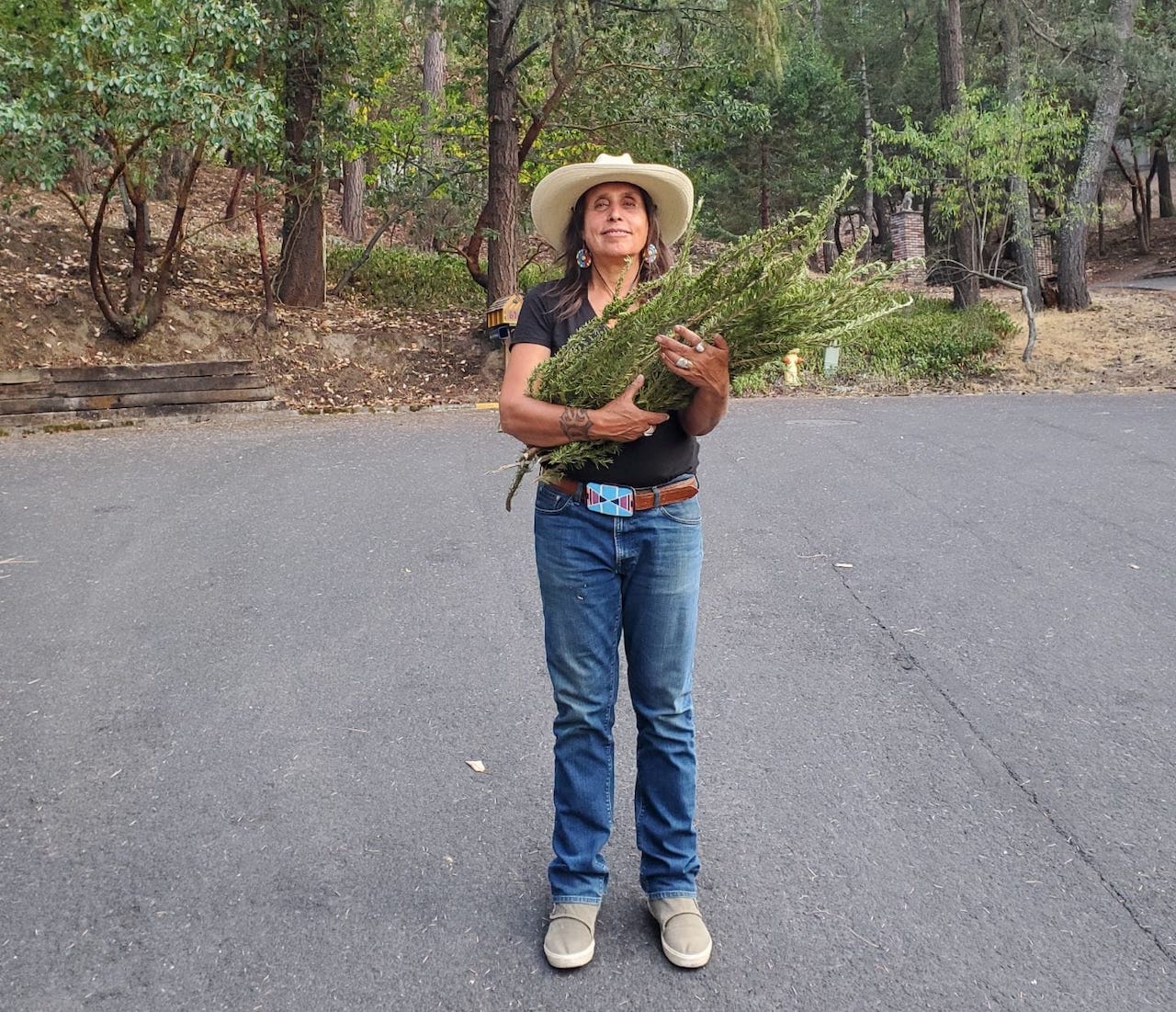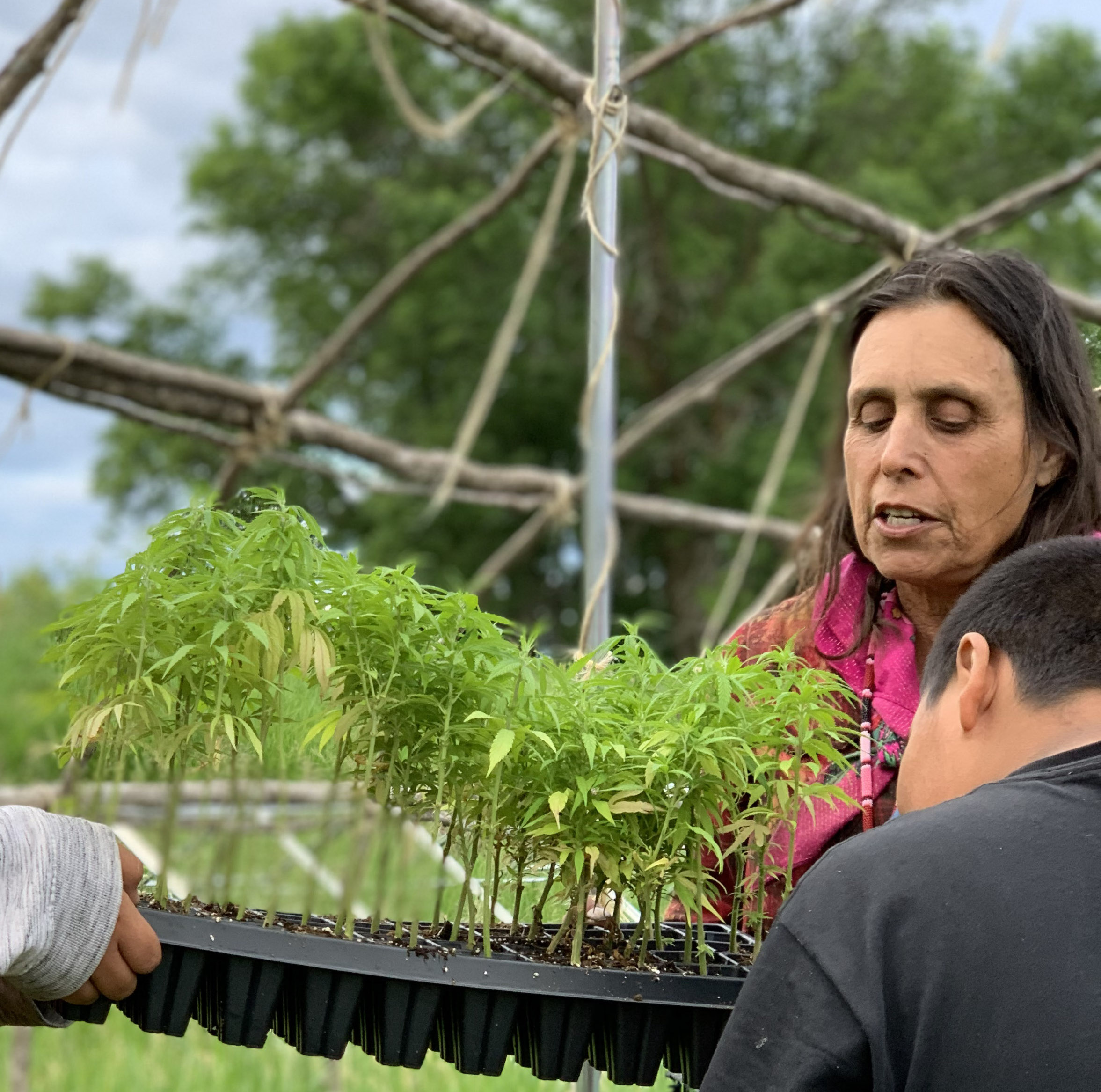Reducing Carbon, Deforestation, and Pollution with Hemp Fiber Production

Winona LaDuke focuses on Hemp to create economically and environmentally sound options for the White Earth Reservation and other Indigenous populations.
Photo: Winona's hemp, Facebook
The Anishinaabe prophecies say we live in a time when we must choose between two very different paths:
- One is well-worn, scorched, and leads to our destruction.
- The other is new, green, leading to Mino-Bimaadiziwin (the good life).
Winona LaDuke, a Native American activist and economist, has clearly chosen to walk the green path. With the support of Daughters for Earth, she is piloting a Hemp production project in Minnesota that would provide the Anishinaabe People with sustainable economic opportunities, while protecting and restoring Earth.
“The opportunity to transition our materials economy is here. And the hemp fibers we’re talking about are a part of that,” said LaDuke, who hopes the project could become a national model.
Often called the “New Green Revolution,” Hemp can replace everything from plastics to building materials, helping reduce deforestation, water pollution, and climate change.

Photo: Courtesy of Keri Pickett and Sarah LittleRedfeather, Winona's Hemp Facebook Page
Never Giving Up
In many ways, LaDuke’s “green” path began decades ago when she fought to recover land promised to her people in an 1867 federal treaty (90% of the land had been taken over by lumber companies and other non-Native groups). Even though the lawsuit was dismissed after years of litigation, it didn’t knock LaDuke down.
She went on to start the White Earth Land Restoration Project, which buys back reservation land from non-Native people to foster sustainable development. It is now one of the country’s largest reservation-based nonprofits.
Funding from Daughters for Earth will help LaDuke pilot her plan to use hemp to make products such as textiles, insulation, and even batteries.
If economic forecasts are any indication, LaDuke is clearly on to something. The global market for hemp is expected to increase fourfold to $36 billion by 2030. And for Mother Earth, the benefits are incalculable.
It’s hard to think of our favorite jeans as fueling climate change, but they can. The textile industry creates 1.2 billion tons of carbon annually (more than all international flights and maritime shipping combined), according to the United Nations.
%20Background%20Removed.png)
Tempted by cheap fashion and fast changing trends, we’re buying 60% more clothes than we did two decades ago. And with less than 1% of it recycled, much of our old clothing is incinerated or ends up in landfills. Plus, experts estimate 20% of water pollution comes from dyes and treatments (not to mention a half a million tons of synthetic microfibers that are ending up in our oceans every year).
.
Enter Hemp!
- It’s an organic material, making it biodegradable.
- It results in far less deforestation (One acre of hemp will produce as much material as 2-3 acres of cotton).
- And it’s not just for clothing. Hemp can be used to make:
- Plastics
- Building materials - using it in place of concrete, metal, carpet, wood, and insulation.
- Paper (It can be recycled up to seven times, whereas tree paper can only be recycled up to three times, if that)


.jpg?auto=compress%2Cformat)
